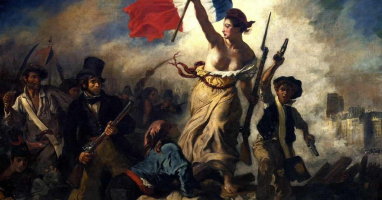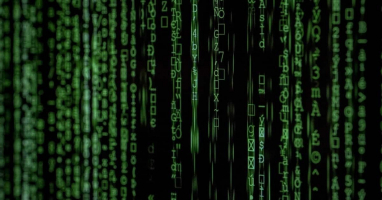I wrote this article in Japanese and translated it into English using ChatGPT. I also used ChatGPT to create the English article title. I did my best to correct any translation mistakes, but please let me know if you find any errors. By the way, I did not use ChatGPT when writing the Japanese article. The entire article was written from scratch by me, Saikawa Goto.
Introduction
Movies and books covered in this article

Three takeaways from this article
- Difficult problems were solved and fame was gained, but now he is rumored to have retreated from human society to hunt mushrooms deep in the forest.
- The story of ‘the gifted’ who could not adapt to Soviet school education but soared as a mathematician with the support of those around him.
- He suddenly published a paper on the “Poincaré conjecture” and received tremendous praise, but what was the reason for his disappointment with the world of mathematics?
Self-introduction article


Published Kindle books(Free on Kindle Unlimited)
“The genius Einstein: An easy-to-understand book about interesting science advances that is not too simple based on his life and discoveries: Theory of Relativity, Cosmology and Quantum Theory”
“Why is “lack of imagination” called “communication skills”?: Japanese-specific”negative” communication”
The quotes in the article were translated using ChatGPT from Japanese books, and are not direct quotes from the foreign language original books, even if they exist.
A Biography Depicting the Life of the Genius “Eccentric” Mathematician Perelman, Who Solved the Century-Old Problem, Poincaré Conjecture
This book is not really a “math book.” There are hardly any mathematical descriptions, and the explanation of the “Poincaré conjecture” itself, which is related to the entire book, is very short. This book is a work that depicts the life of a mathematician named Perelman, and even people who are not good at math should be able to enjoy it.
By the way, I explain in detail about the “Poincaré conjecture” in another article, so please read that one.

In this article, I won’t explain the “Poincaré conjecture” itself, but let’s touch upon how important it is in the world of mathematics.

In the year 2000, the Clay Mathematics Institute announced “the Millennium Prize Problems,” seven unsolved mathematical problems that are extremely important and desirable to solve in the field of mathematics. One of them is the “Poincaré conjecture.” If any one of the seven problems is proven, a prize of one million dollars can be obtained. Even if it is converted to Japanese yen at a rate of 100 yen per dollar, it is 100 million yen.
Of the seven “the Millennium Prize Problems,” only the “Poincaré conjecture” has been proven at the time of writing this article. Just from this, you could understand how amazing Perelman is. And there’s even more surprising fact. Perelman, of course, had the right to receive the one million dollar prize money, but he refused to receive it. In addition, he refused the highest honor in the field of mathematics, the “Fields Medal,” which is called the “Nobel Prize of Mathematics” and is announced only once every four years. Of course, refusal of the “Fields Medal” is unprecedented and there are no other examples besides him.

You might feel that he is quite an “eccentric”. Many mathematicians have outrageous anecdotes, and Perelman is no exception.
This is depicted in the book “Perfect Rigor: A Genius and the Mathematical Breakthrough of the Century”.
The book does not include an interview with Perelman himself. The author was unable to contact Perelman, and this is not unique to the author. It is said that Perelman is currently living a life disconnected from society. There are even rumors that he is “picking mushrooms in the forest.” Even his mentor cannot get in touch with him, which shows just how thorough his isolation is.
His life is filled with unbelievable turmoil.

The Motivation behind the Author’s Interest in Perelman and the Structure of this Book, as well as Perelman’s “Luck in Meeting”
At the beginning of this book, the author lists three reasons for why they decided to write about Perelman.
- How did Perelman manage to prove the “Poincaré conjecture”?
- Why did Perelman give up on mathematics and the world he lived in?
- Why did Perelman refuse to accept the prize money?

This book is essentially an answer to these questions.

The content of this book is divided into two main parts.
- How did Perelman grow up in the mathematical education environment of the Soviet Union?
- Why did Perelman become disappointed with the mathematical community?
The book includes discussions on the proof of the “Poincaré conjecture” in between those descriptions.

First, let’s start with the discussion about the educational environment in the Soviet Union.
Some people may imagine that the Soviet Union had a very good educational environment for gifted children since this is a book about a genius mathematician. However, the reality is the opposite. Perelman had to endure a lot of hardship in the Soviet Union’s educational environment. Even in modern-day Japan, the situation hasn’t changed much, but he was also tormented by the suffering of being “gifted.”
The author of this book is a contemporary of Perelman and also Jewish, so it can be assumed that he received the same public education as Perelman did at that time. The author describes the situation at that time, stating that the Soviet Union, which was attracting attention as the world’s first socialist state, pursued “equality,” and this also applied to education. In other words, “the motivation and ability of people with outstanding talent were significantly constrained.” If Perelman had only received school education and nothing more, he may not have become the genius mathematician who proved the “Poincaré conjecture.”

For him, what saved him was that there was someone who thought, “Let’s gather people with talent in mathematics and educate them.” If such an environment had not been created, he would not have been able to learn mathematics properly, and his talent would not have blossomed.

This is not limited to this story, but Perelman was fortunate to have many “encounters with people” in his childhood. We can say that he was truly a person with “good luck”. I would like you to read this book to learn more about the details, but I will quote this sentence to give you an idea of how lucky he was to have such “encounters with people”.
Thus, the lineage of Perelman’s guardian angels continued. Rukshin took him by the hand and brought him to math competitions, Rizik took care of him and helped him graduate from high school, Zalgaller nurtured his problem-solving ability at university, and Alexandrov and Burago entrusted him to continue his mathematics without interference or hindrance. Burago entrusted him to Gramov, and Gramov took him out to the world.

If even one person was missing from among those whose names were mentioned, it is likely that he would not have become a mathematician. This is because Perelman was quite a “problem child”. He had various difficulties in living, from everyday matters such as “not taking a bath,” “not changing clothes,” and “not cutting his nails,” to personality problems such as “imposing strict rules not only on himself but also on others.” Without someone who recognized and nurtured his mathematical talent, he would undoubtedly have been rejected by society. The book discusses Perelman’s behavior of imposing strict rules on others in great detail, which suggests that he would have had considerable difficulty communicating with others. This personality of his would also have an impact on his later life, in which he would leave the mathematical community and become isolated.
Furthermore, there were major problems with the country of the Soviet Union itself. Even after becoming Russia, it was probably not much different, but reading this book reveals how terrible the lack of flexibility was in the Soviet era. Perelman was influenced in various ways by state decisions, such as his participation in the mathematics Olympics being jeopardized because he was a “Jewish” or almost not being able to enter graduate school. It is unclear how Perelman himself perceived these situations, as interviews with him were not possible, but in any case, those around him had to reach out and help him overcome obstacles each time. The Leningrad mathematics community and Academy members fought together to get Perelman into graduate school, which shows just how outstanding his talent was.

The process of talented young people going out into the wide world, while being tossed around by the country called the Soviet Union, the background of the times, and the luck of the people they meet, is depicted carefully.
Proof of the “Poincaré Conjecture” and Subsequent Isolation
Perelman, with the cooperation of various people, left the Soviet Union and went on to soar as a mathematician in the world.

Perelman first gained attention in America. He easily proved the extremely difficult problem “Soul conjecture” that American mathematicians had been working on for 20 years, and his name resounded throughout the world. However, Perelman eventually left America. Although he received invitations from universities all over the world, he declined them all and decided to return to the Soviet Union. Perelman, who had difficulty communicating with others, may not have been able to adapt to the atmosphere of a foreign country, even in the unique community of mathematicians.

Afterwards, Perelman’s whereabouts became completely unknown. However, one day, he posted a paper on the internet and even sent an email to some mathematicians asking them to read it. At that time, the mathematicians had a hunch that something big was happening, because Perelman was not the type of person to produce incomplete results. He was known for being an extreme perfectionist, so many mathematicians thought that if Perelman published a paper, it could not be wrong.
The paper that Perelman published was not about the “Poincaré conjecture” itself. However, this paper, which was posted on the internet, would eventually lead to the solution of the “Poincaré conjecture”. This is because the paper was an innovative one about a method called “Ricci flow” developed by a mathematician named Hamilton to solve the “Poincaré conjecture.”

The “Poincaré conjecture” had reached a state where many mathematicians had brought various ideas and had made considerable progress towards proving it, but had hit a snag at the very end. As for mathematical proofs, there is a rule that “the person who fills in the final piece of the puzzle is considered the one who proved it, regardless of how much contribution other mathematicians made before.” Although the problem of the “Poincaré conjecture” was organized by the “geometrization conjecture” proposed by Thurston, and previous contributions were significant, such as the powerful weapon “Ricci flow” developed by Hamilton, Perelman was the one who solved the final problem. It took two years to check the proof, but in the end, it was recognized that “Perelman filled in the final piece of the ‘Poincaré conjecture'”.
Naturally, Perelman’s fame skyrocketed. As mentioned earlier, of the seven “the Millennium Prize Problems”, only the “Poincaré conjecture” had been solved. And he was the person who overcame the biggest and last obstacle. There was no way he would not be evaluated. However, as his fame grew, Perelman became increasingly isolated from society. As previously mentioned, Perelman’s difficult personality was also a factor, but there was also an aspect of him having had enough of the “frenzy” of the mathematical world.
The author describes this situation in an easy-to-understand metaphor.

If you think it’s natural for a university (even if there is no one at that university who can understand it) to offer money to someone who has solved an incredibly difficult problem, consider the following example. A publisher invites a writer and says, “I haven’t read any of your works. To tell the truth, no one in our company has read any of your works to the end. But since you are a genius, we want you to sign a contract.”

I see, it’s easy to understand.
Actually, mathematics is different from publishing. In the case of publishing, no matter how difficult a novel is, one should be able to at least ‘read and give an impression’. However, in the case of mathematics, the situation of ‘it’s too difficult to even read a paper’ can occur. It’s not fair to simply compare the two. Nevertheless, I felt that this analogy succinctly expresses the situation in which Perelman was placed.

Furthermore, there is another reason why Perelman became disappointed with the mathematics community. To understand this, let me first explain how innovative Perelman’s paper was.
The ‘Poincaré conjecture’ is an unsolved problem in mathematics, and naturally, everyone who worked on this problem aimed to solve it using mathematical methods. However, Perelman improved the ‘Ricci flow’ method using an idea similar to ‘the heat conduction equation’ in physics, and ultimately solved the ‘Poincaré conjecture’. While it is not uncommon to discover surprising connections between mathematics and physics, for those who had been working on the ‘Poincaré conjecture’ for years, it was a bolt from the blue.

Michael Freedman, a mathematician who contributed to the proof of the “Poincaré conjecture,” commented in the newspaper,
It’s a little unfortunate for topology.
He explained,
Because Perelman solved the most difficult problem in the field, topology has lost its appeal and as a result, talented young people who are now in the field will probably leave.

If the “Poincaré conjecture”, which is like the “Holy Grail” in the field of “topology”, were solved, the appeal of “topology” would be diminished. Furthermore, since it was proven in a way unrelated to “topology”, this is all the more reason why. I think that’s what it means. While some may understand this sentiment, it’s important to acknowledge that solving a long-awaited difficult problem is a significant achievement. Although such reactions may not have been common, they can be damaging to sensitive individuals. If something had been different, Perelman might still be actively pursuing new mathematical challenges today. When you think about it, it’s a really sad story.

This is a work that makes you think about how to face exceptional talent.

Conclusion
The translator of this book is Aoki Kaoru, whom I trust very much as a translator of scientific books. I can’t tell if the translation is good or bad, but I think “There are no misses in books translated by Aoki Kaoru.” If you want to read a book about science, physics, or math written by a foreign author, it’s recommended to choose one translated by Aoki Kaoru.

Researchers generally have some unusual traits, but I think mathematicians are particularly eccentric. Among such eccentric mathematicians, Perelman is undoubtedly exceptional. It is impressive how thoroughly they delve into such a person without being able to obtain his own words.

Published Kindle books(Free on Kindle Unlimited)
“The genius Einstein: An easy-to-understand book about interesting science advances that is not too simple based on his life and discoveries: Theory of Relativity, Cosmology and Quantum Theory”
“Why is “lack of imagination” called “communication skills”?: Japanese-specific”negative” communication”







コメント